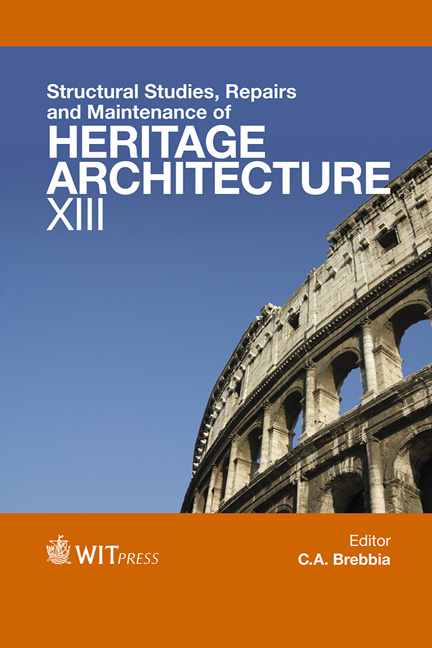Historic Traceology As A Complex Tool For Rediscovery Of Lost Construction Skills And Techniques
Price
Free (open access)
Transaction
Volume
131
Pages
11
Page Range
3 - 13
Published
2013
Size
1871 kb
Paper DOI
10.2495/STR130011
Copyright
WIT Press
Author(s)
J. Bláha
Abstract
There are various macroscopic traces recognizable and readable on the surfaces of historical structures and materials. According to their origin they can be divided into several groups including traces of the transportation or other manipulation during construction; geometric schedules, height and direction lines, auxiliary design sketches; signs of wear and natural aging of materials; structural failures and impact of natural disasters; traces of subsequent additional modifications or conservation interventions; small epigraphical relics such as inscriptions, datings, the names of artisans or craftsmen, various graffiti etc. The traces of working tools are among the most important ones. They allow us to reconstruct forgotten arts and techniques performed by craftsmen or artisans in the past. For tool marks examination, the original surfaces intact with no later modifications or even conservation activities are very important. The sites with authentically preserved surfaces or details should therefore be registered, documented and then rigorously protected from adverse environmental factors and, if possible, in future spared any interventions including even attempts at conservation and restoration. Keywords: construction materials, documentation, hand tools, hand crafts, tool marks examination, traceology, use-wear analysis.
Keywords
Keywords: construction materials, documentation, hand tools, hand crafts, toolmarks examination, traceology, use-wear analysis.




